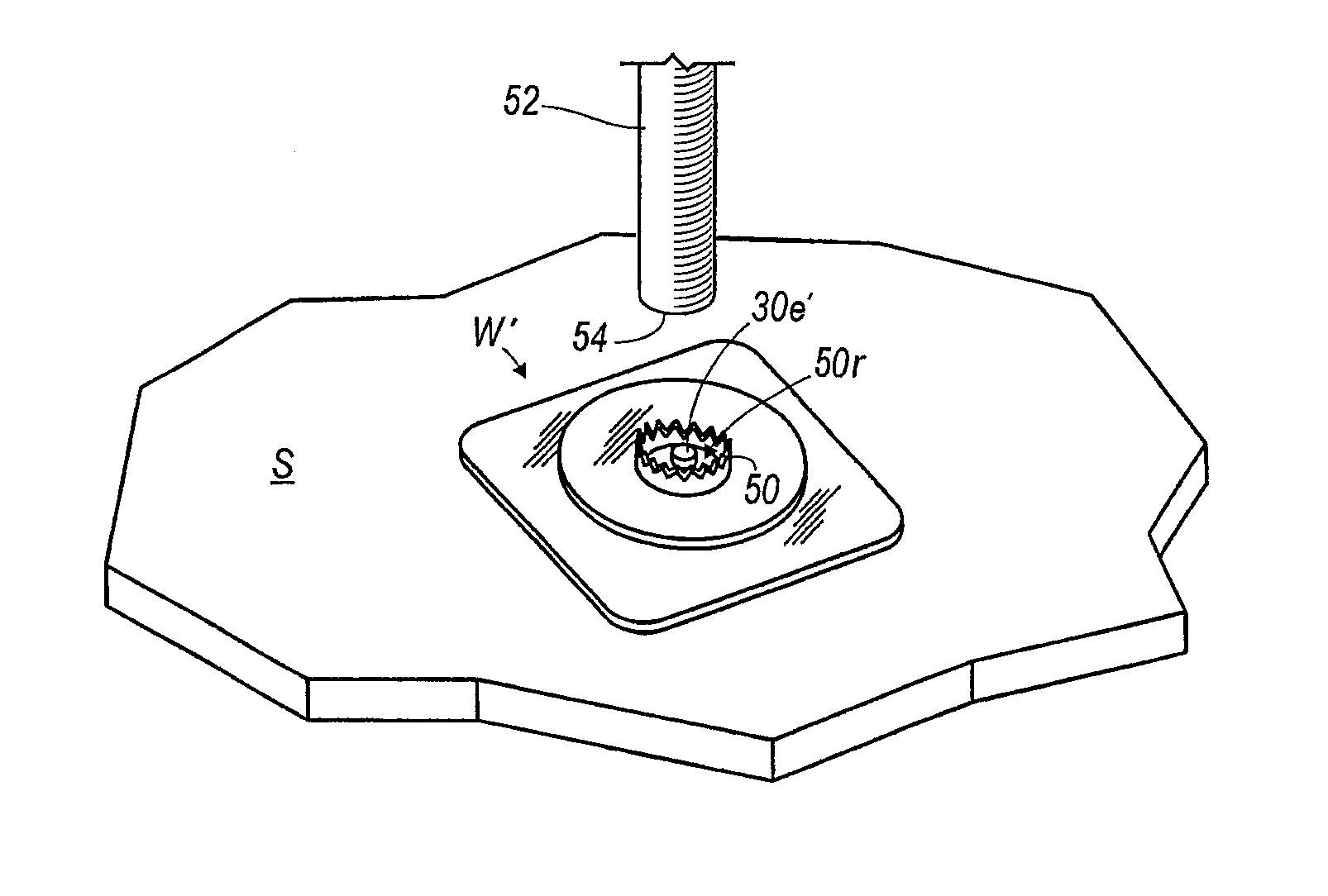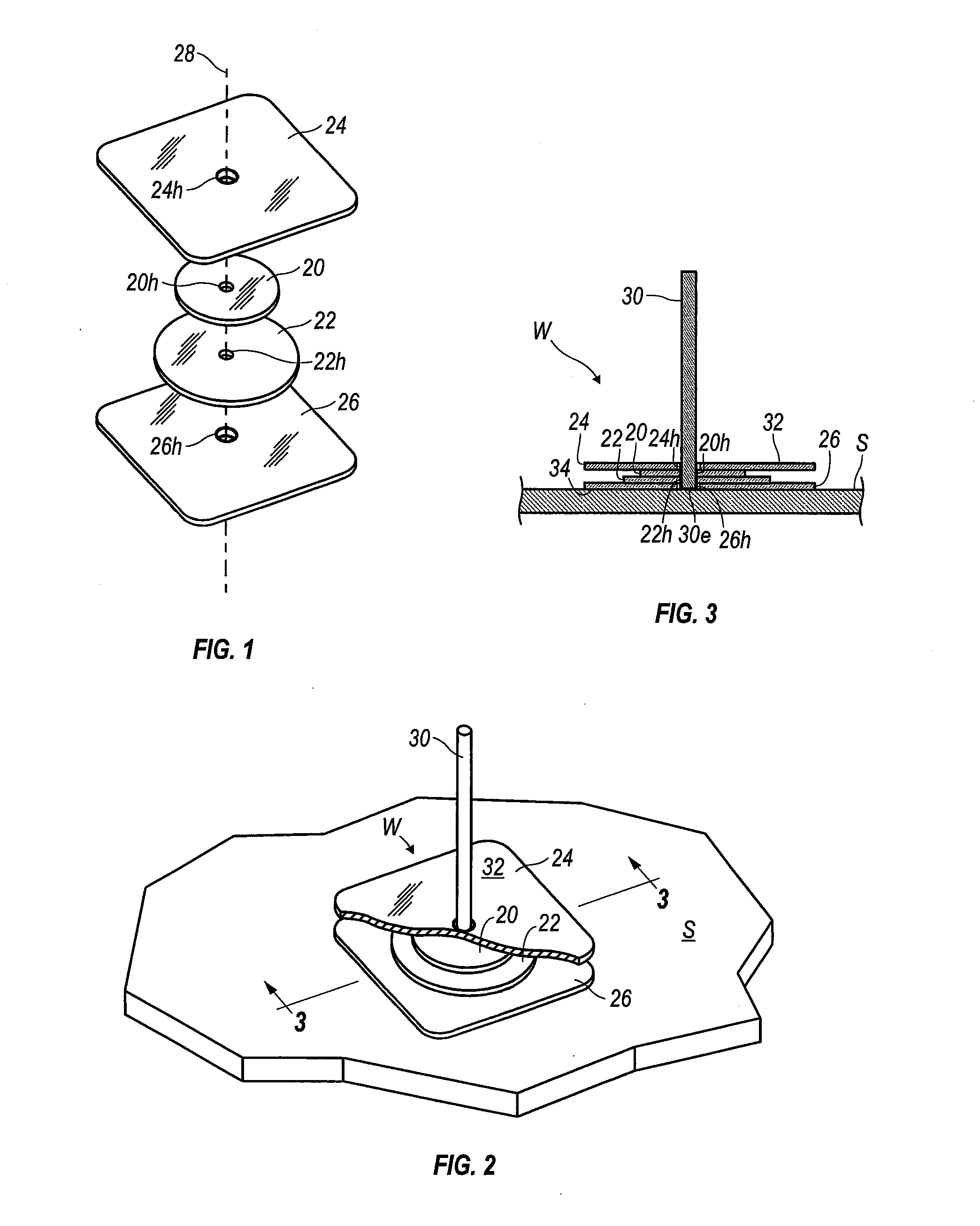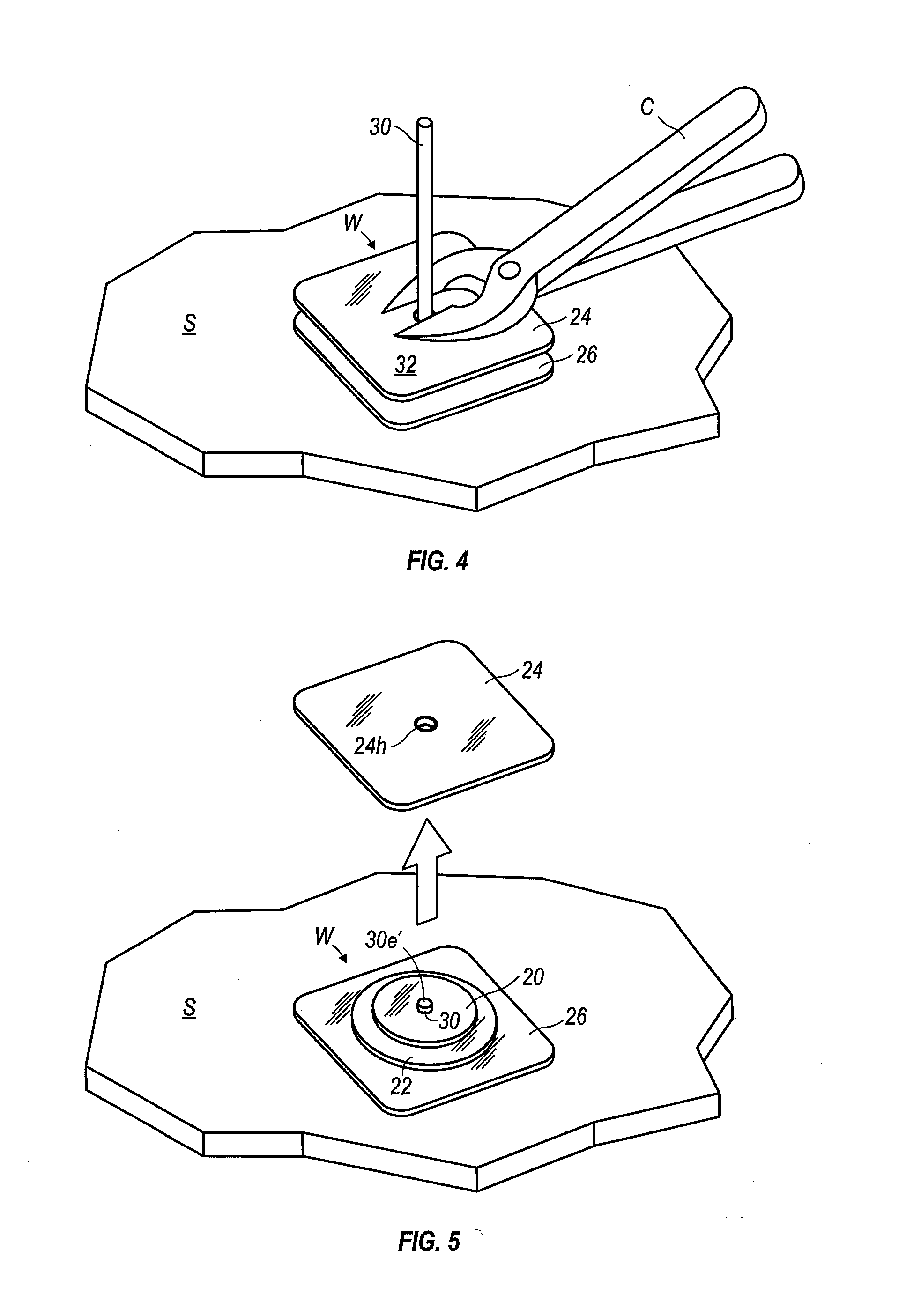Method of Connecting Jewelry Components
a technology of jewelry components and rivets, applied in the field of jewelry fabrication, can solve the problems of reducing the effort and skills needed to cut the precise length of riveting wires, and achieve the effects of reducing effort and skills, reducing effort, and more successful jewelry connection
- Summary
- Abstract
- Description
- Claims
- Application Information
AI Technical Summary
Benefits of technology
Problems solved by technology
Method used
Image
Examples
Embodiment Construction
[0014]FIGS. 1-6 show one method of the present invention used to connect two jewelry components during the manufacture of a jewelry item. Referring to FIG. 1, the two components include a first component 20 and a second component 22. In this instance, both components 20, 22 are cylindrical with a cylindrical surface defining a hole 20h, 22h through the respective component. The components 20, 22 are linearly aligned along an axis 28 the centers of the holes 20h, 22h intersecting the axis. The shape of the components is not important to the invention. Moreover, while FIGS. 1-6 show the holes 20h, 22h positioned in the center of the components 20, 22, the holes 20h, 22h may be positioned anywhere within the components 20, 22.
[0015]A first plate 24 and a second plate 26 are positioned on either side of the components 20, 22. Each plate 24, 26 is identically shaped and generally square with rounded corners. Each plate 24, 26 has a cylindrical surface defining a hole 24h, 26h through the...
PUM
| Property | Measurement | Unit |
|---|---|---|
| Length | aaaaa | aaaaa |
| Thickness | aaaaa | aaaaa |
| Diameter | aaaaa | aaaaa |
Abstract
Description
Claims
Application Information
 Login to View More
Login to View More - R&D
- Intellectual Property
- Life Sciences
- Materials
- Tech Scout
- Unparalleled Data Quality
- Higher Quality Content
- 60% Fewer Hallucinations
Browse by: Latest US Patents, China's latest patents, Technical Efficacy Thesaurus, Application Domain, Technology Topic, Popular Technical Reports.
© 2025 PatSnap. All rights reserved.Legal|Privacy policy|Modern Slavery Act Transparency Statement|Sitemap|About US| Contact US: help@patsnap.com



